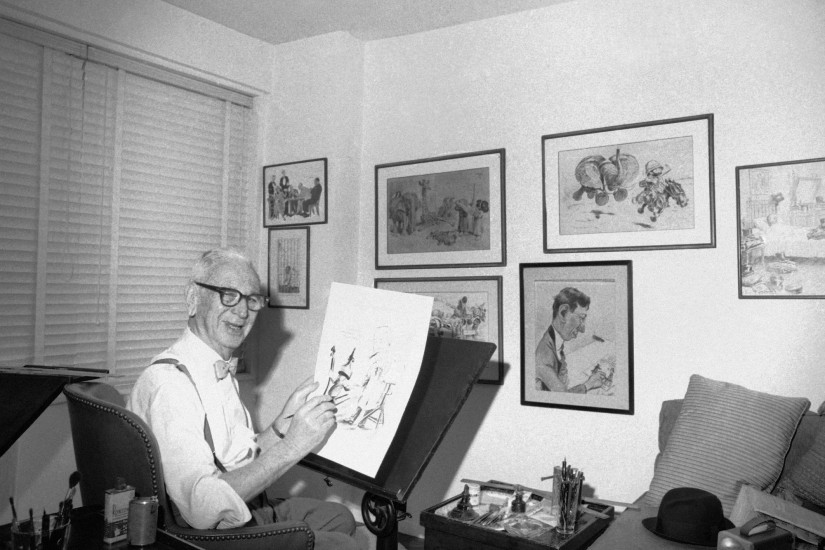Now that comics have put on long pants and started to strut around with the grownups by calling themselves graphic novels, it’s important to remember that comics have their roots in subversive joy and nonsense. For the first time in the history of the form, comics are beginning to have a history. Attractively designed collections of Little Nemo, Krazy Kat, Thimble Theater, Barnaby, Pogo, Peanuts, and so many more—all with intelligent historical appreciations—are finding their way into libraries.
Paul Tumey, the comics historian who co-edited The Art of Rube Goldberg book seven years ago, has recently put together a fascinating and eccentric addition to the expanding shelves of comics history.3 The future of comics is in the past, and Tumey does a heroic job of casting a fresh light on the hidden corners of that past in Screwball!: The Cartoonists Who Made the Funnies Funny. It’s a lavish picture book with over six hundred comics, drawings, and photos, many of which haven’t been seen since their twenty-four-hour life-spans in newspapers around a century ago. The book is a collection of well-researched short biographies of fifteen artists from the first half of the twentieth century, accompanied by generous helpings of their idiosyncratic cartoons. Goldberg—whose name schoolchildren learn when their STEM studies bump into chain reactions—is the perfect front man to beckon you toward the other less celebrated newspaper cartoonists who worked in the screwball vein that Tumey explores.
Screwball is an elusive attitude in the language of laughs and, like pornography, it’s hard to define but easy to recognize. Tumey prowls for common denominators and trails of influence that connect these odd ducks and their droppings. But the closer one looks, the less they seem to have in common. Virtually all the earliest newspaper comics were designed to be funny, but not all the funnies were screwball. The book is a survey, not in the sense of a Comics 101 history course serving up a knowledgeable overview, but more like a deep exploratory mining dig that samples underground specimens to assay what’s of value. The project is hardly arbitrary, but it doesn’t seem exactly definitive, either. It’s actually sort of, well, screwy—and it may just be that screwball is its own shortest definition.
One foot of the slippery screwball stretches back through vaudeville to commedia dell’arte with its stock situations and characters; the other foot strides forward toward Dada, surrealism, and the theater of the absurd—while the third foot of this ungainly creature remains firmly balanced on a banana peel. Screwball comics tend toward the manic, excessive, over-the-top, obsessive, irrational, anarchic, and grotesque; they can veer toward parody or satire, but at their core they are an assault on reason and its puny limitations. They wage a gleeful war on civilization and its discontents—armed mostly with water-pistols, stink bombs, and laughing gas.
